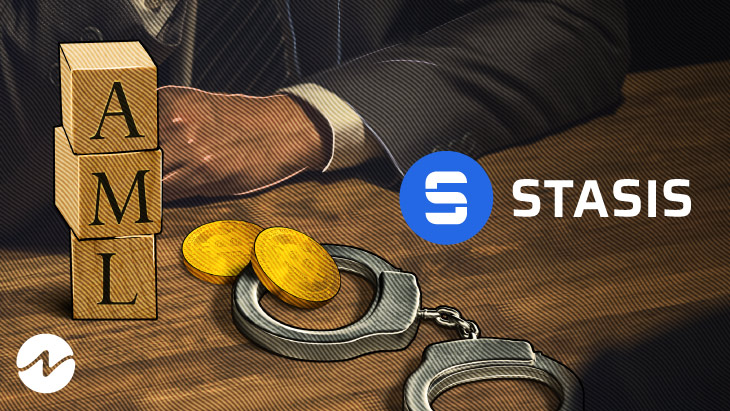As the world of cryptocurrency and stablecoins continues to evolve and gain mainstream adoption, the importance of implementing effective anti-money laundering (AML) practices becomes increasingly crucial. By adhering to AML regulations and guidelines, the crypto industry can establish greater credibility and trust among investors and regulators, ultimately leading to a more stable and secure financial ecosystem. STASIS, the leading euro stablecoin issuer, continues to promote transparency within the tightening market conditions.
Facing the Regulatory Unclarity
STASIS’ journey started in 2017 when they assisted in educating local service providers — auditors and fund administrators. That experience helped the firm to develop relationships with the local regulator MFSA and government top officials like Prime Minister, Minister for Digital Innovation, and even the President herself. The Government officials and regulators from Malta consulted STASIS and asked them to contribute to the legal framework.
The conflict of interests between the leading stablecoin provider Tether and Bitfinex led to the inception of STASIS five years ago. Also, STASIS significantly turned up to educate the community and regulators across 18 countries about crypto regulation. The firm achieved it by facilitating and supporting crypto conferences worldwide.
The existing E-money regulation was meant to be disrupted by the blockchain, so STASIS proposed the creation of a new set of licenses and rules for ventures like stablecoins. In 2018, the team published the Book containing a comprehensive overview and analysis of digital asset regulation in 13 jurisdictions worldwide. A year later, a second, more detailed version was published, specifically targeted at state-level decision-makers, and is enriched with reference data on the blockchain and cryptocurrencies: their design, mechanics, features, purposes, risks, and benefits.
In 2020, the STASIS team was a part of the INATBA expert task force, which helped the European Commission to draft a European framework for crypto assets, which later became the basis for future MiCA regulation. While the upcoming MiCA regulations are widely discussed, we’d like to clarify this intricate point.
In 2025, it is expected that a MiCA regulation framework will enter into force and clearly limit non-European stablecoin usage by restraining exchange operations as well as by complicating the registration & issuing requirements. To prepare a company for the upcoming MiCA regulation and be supervised by MFSA in a transitional period, STASIS applied earlier this year.
Gregory Klumov, CEO and Founder of STASIS, stated:
“EURS team submitted a registration application to the Malta Financial Services Authority (MFSA) to become registered as a Virtual Financial Asset Token Issuer in line with the current Maltese Virtual Financial Asset Framework. Once MICA enters into force (vote projected to take place in April 2023), the Issuer board will submit an Electronic Money Token License application with the MFSA in line with MICA regulatory regime to be licensed and supervised under the new regulatory regime.”
EURS is Always One Euro
The stablecoin EURS is a blue-ribbon asset that originated in Malta – the heart of EU fintech. EURS is a unique euro-backed stablecoin with two crucial characteristics. Firstly, it is the only stablecoin that enables multiple distributed ledgers. Secondly, it utilizes multiple capital channels – SEPA, ISIN, SWIFT, and ISDA.
Till the start of this year, the valuation of EURS products rose nearly to $6 billion. This boosted STASIS to become one of the largest non-USD stablecoin issuers. The STASIS’ B2C entity is regulated by VQF (Self-Regulatory Organization – SRO), officially recognized by the Federal Financial Market Supervisory Authority (FINMA). Notably, VQF and FINMA are pioneers of regulation in crypto adoption, always setting an example to other governmental regulators, especially regarding Anti-Money Laundering (AML).
To enforce complete transparency, EURS is audited by five leading global audit firms. The project developed its native white-label API for crypto-to-fiat settlement in the EU region. This API infrastructure is live on prominent blockchain networks such as Ethereum, Algorand, Ripple, XDC Network, and Polygon.
Moreover, STASIS safeguards its investors by ensuring that their digital assets are backed appropriately by collaterals. STASIS collateral reserves include daily account statements, quarterly audits and monthly verifications by BDO Malta, and on-demand verification for entities collaborating with them. Furthermore, STASIS competes with the biggest euro-denominated staking pools with the DeFi-centric stablecoin EURS.
A Swiss Gateway to DeFi
One can get EURS on several blockchains straight from the source — via STASIS featured Sellback service that effectively allows working both in CeFi and DeFi to existing legislation in the EU and Switzerland.
For the delegation of the EURS market’s facilitation, STASIS has chosen the Swiss-based SCB exchange.SCB is a trustworthy Swiss-registered exchange bound by the laws of Switzerland, one of the pioneer nations with advanced crypto regulatory frameworks. Klumov asserted, “No bank has yet refused to send/receive funds against this FINMA-licensed institution.”
STASIS position itself in the frontier to onboard users and provide them with hassle-free and top EU-grade crypto services. With its highly experienced team, the stablecoin provider eases most processes in the digital asset world for SCB customers.
Currently, EURS is traded on the leading centralized exchanges such as Bitfinex, HitBTC, Cryptology, CEX.io, and Indodax and leading decentralized platforms such as Uniswap and Curve Finance.
EURS successfully competes in the DeFi space with the biggest euro-denominated staking pools. STASIS allows EURS users to link their digital wallets to banking cards. Using Wirex or TrustPayments cards, users could not only acquire EURS using cards’ fiat but also cover their everyday expenses via cards and withdraw cash via ATM.
Disclaimer: The opinions expressed in this article do not purport to reflect the views of TheNewsCrypto or its members. TheNewsCrypto team encourages all to do their research before investing.








